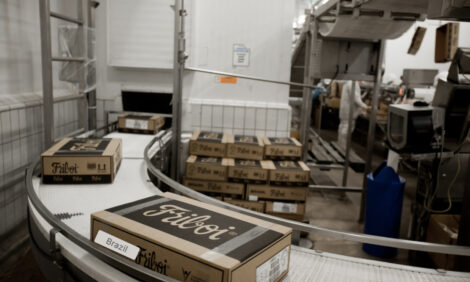



Zinc Content in Animal Feed Reduced
EU - The European Food Safety Authority is proposing a reduction of the maximum permitted content of zinc in feed for all animal species.It is estimated that the new proposed levels will reduce the amount of zinc in manure released in the environment by about 20 per cent.
The reduction in maximum permitted content of zinc in feed ensures consumer safety, animal health and welfare, and does not affect animal productivity.
To complete its risk assessment, EFSA reviewed relevant available literature as well as data received from national authorities of European countries and from stakeholders.
Following a request from the European Commission, the Panel on Additives and Products or Substances used in Animal Feed (FEEDAP) was asked to deliver a scientific opinion on the potential reduction of the currently authorised maximum zinc content in complete feed (250 mg Zn/kg for pet animals, 200 mg Zn/kg for fish and milk replacer and 150 mg Zn/kg for other animal species).
To improve the available information on the use of zinc in animal nutrition, EFSA launched a call for data to EU Member States and EEA/EFTA countries and to stakeholders. The data submitted were used in the current Scientific Opinion.
Zinc in the form of its divalent metal ion, Zn2+, is nutritionally essential for all living organisms.
The total amount of zinc in the human body is 2-3 g and its concentrations in tissues are about the same in all mammals. Virtually all its functions are in proteins, in which it is a catalytic, structural, or regulatory cofactor.
A critical review of:
- the zinc requirements of food-producing and pet animals,
- the zinc concentration of feed materials and
- the calculated background zinc concentration of complete feed supports the possibility of a considerable reduction of the currently authorised maximum concentration for total zinc in feed.
The FEEDAP Panel developed, based on an approximation using zinc requirements and background data, potential new maximum contents, which could replace the current ones.
The newly proposed total maximum contents are: 150 mg Zn/kg complete feed for piglets, sows, rabbits, salmonids, cats and dogs; 120 mg Zn/kg complete feed for turkeys for fattening; 100 mg Zn/kg complete feed for all other species and categories.
The use of phytase, either from endogenous source or from a feed additive, in feeding piglets, pigs for fattening and sows would allow a further reduction of the newly proposed total maximum contents by 30 per cent (from 150 to 110 mg Zn/kg feed for piglets and sows and from 100 to 70 mg Zn/kg feed for pigs for fattening).
The newly proposed total maximum contents ensure health, welfare and productivity of the target species.
The newly proposed total maximum contents do not affect consumer safety. The FEEDAP Panel expects that the introduction of the newly proposed total maximum contents, provided they are applied in feeding practices, would result in an overall reduction of zinc emissions from animal production of about 20 per cent.









